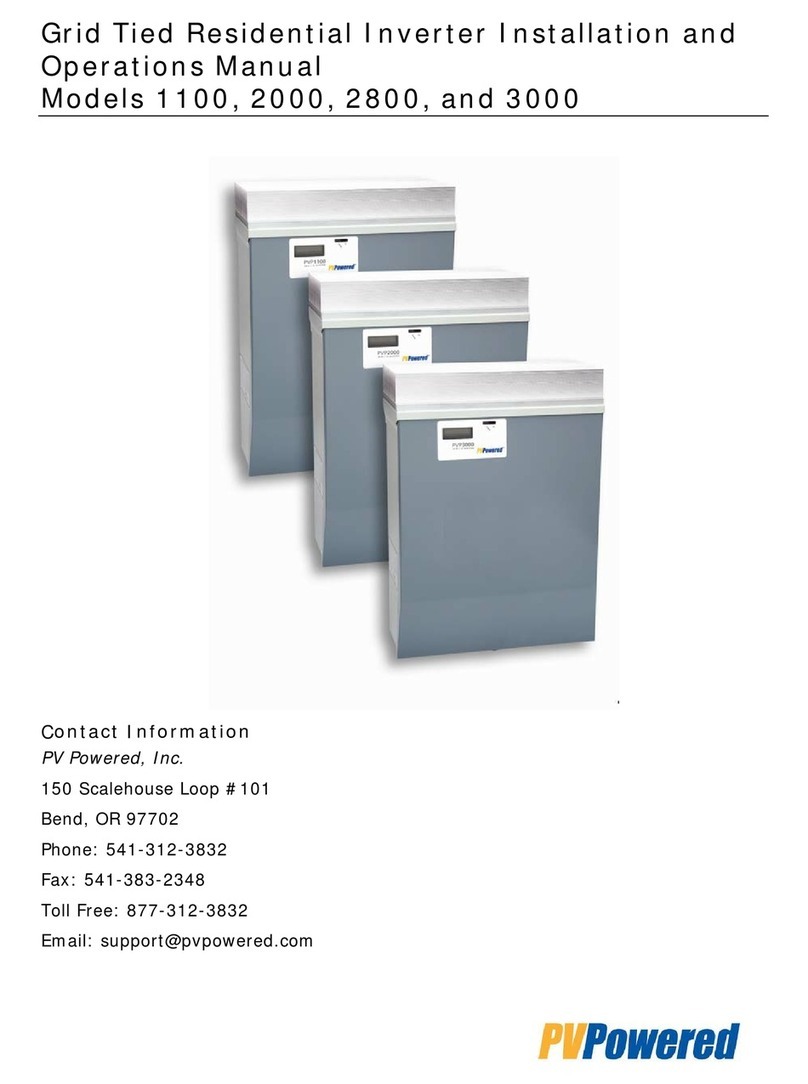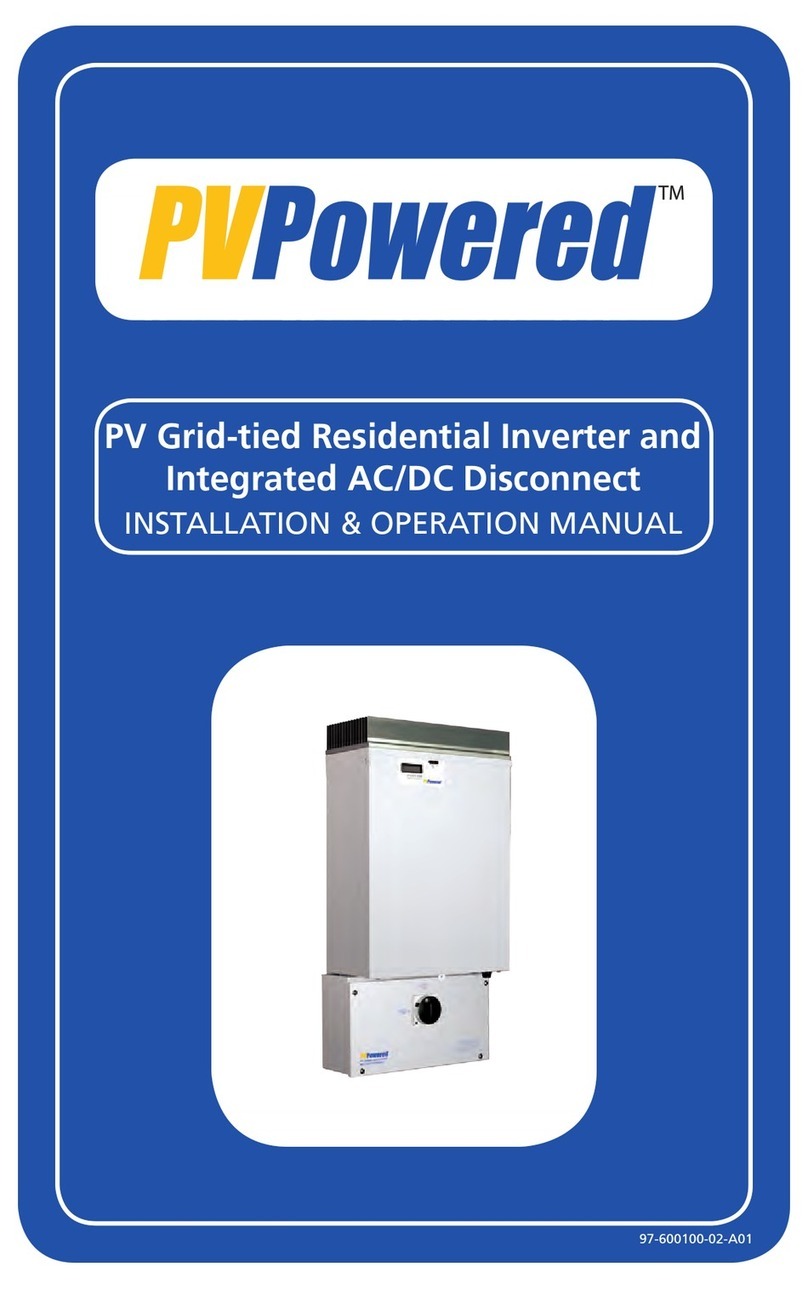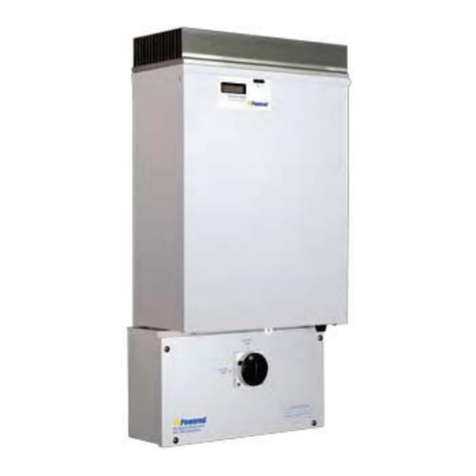
Grid-Tied Residential Inverters
Installation and Operation Manual
v
TABLE
of CONTENTS
Table of Contents
1. Introduction and Safety.................................................................................................1
1.1 General Safety................................................................................................................1
1.2 FCC Compliance............................................................................................................2
2. Planning ..........................................................................................................................3
2.1 Select a Location for the Inverter ..................................................................................3
2.2 Mounting the Inverter ...................................................................................................4
3. Installation......................................................................................................................5
3.1 Mounting and Anchoring ...............................................................................................5
3.2 Electrical Connections ...................................................................................................7
4. Operations ....................................................................................................................17
4.1 Start Up Procedures .....................................................................................................17
4.2 Inverter Front Panel Status Indicators ........................................................................18
5. Maintenance and Troubleshooting.............................................................................21
5.1 Red and Green LED Lights ON ..................................................................................21
5.2 Ground Fault ................................................................................................................21
5.3 Displayed Fault Codes .................................................................................................22
6. Limited Warranty ........................................................................................................25
6.1 Term of Coverage ........................................................................................................25
6.2 Coverage ......................................................................................................................25
6.3 What is Not Covered....................................................................................................26
6.4 Disclaimer and Limitation of Liability ........................................................................26
6.5 Arbitration....................................................................................................................27
6.6 Miscellaneous Provisions ............................................................................................28
7. Return Procedure.........................................................................................................29
7.1 Information about Your System ...................................................................................29
Appendix A- Specifications ...............................................................................................31
Index ..................................................................................................................................33

































